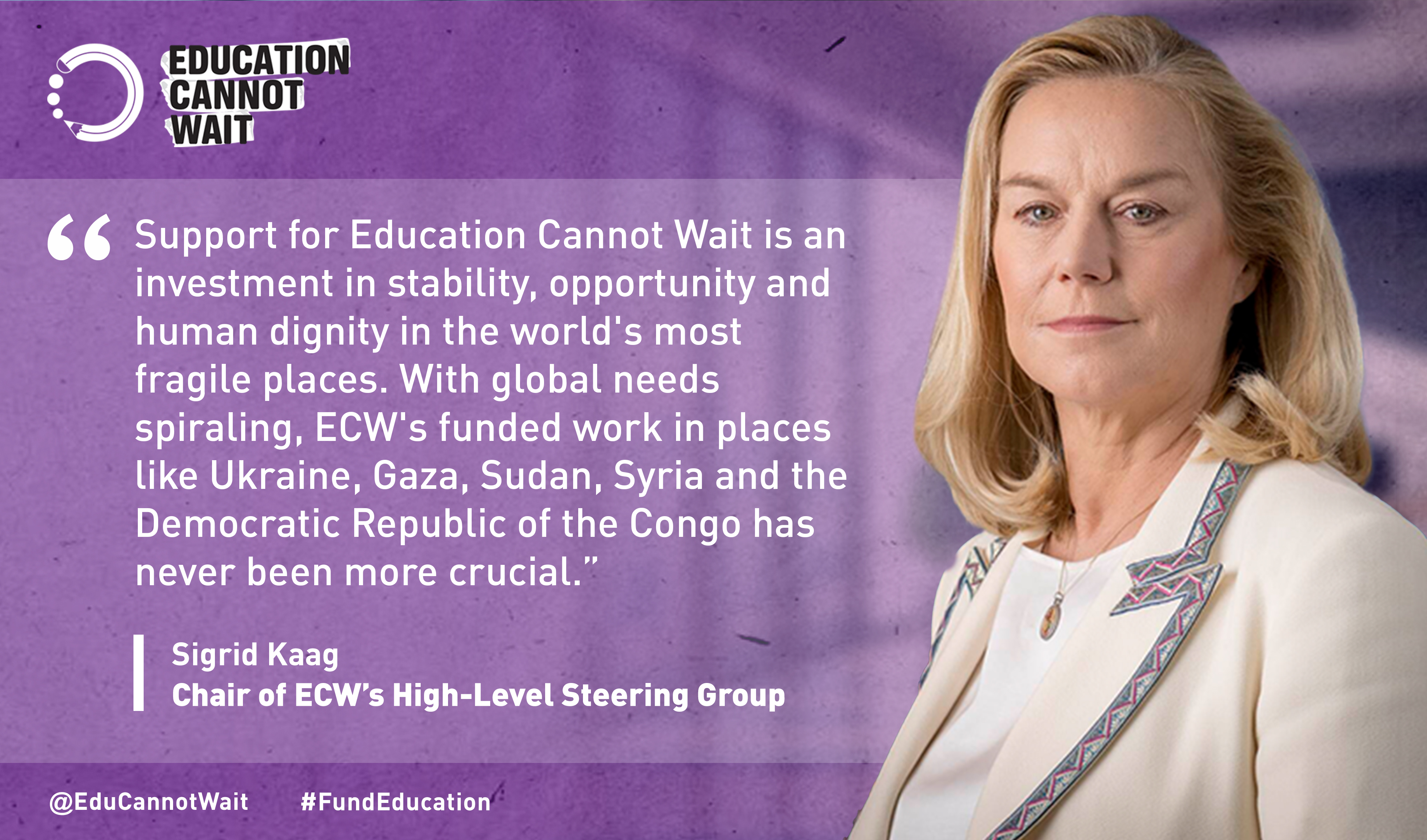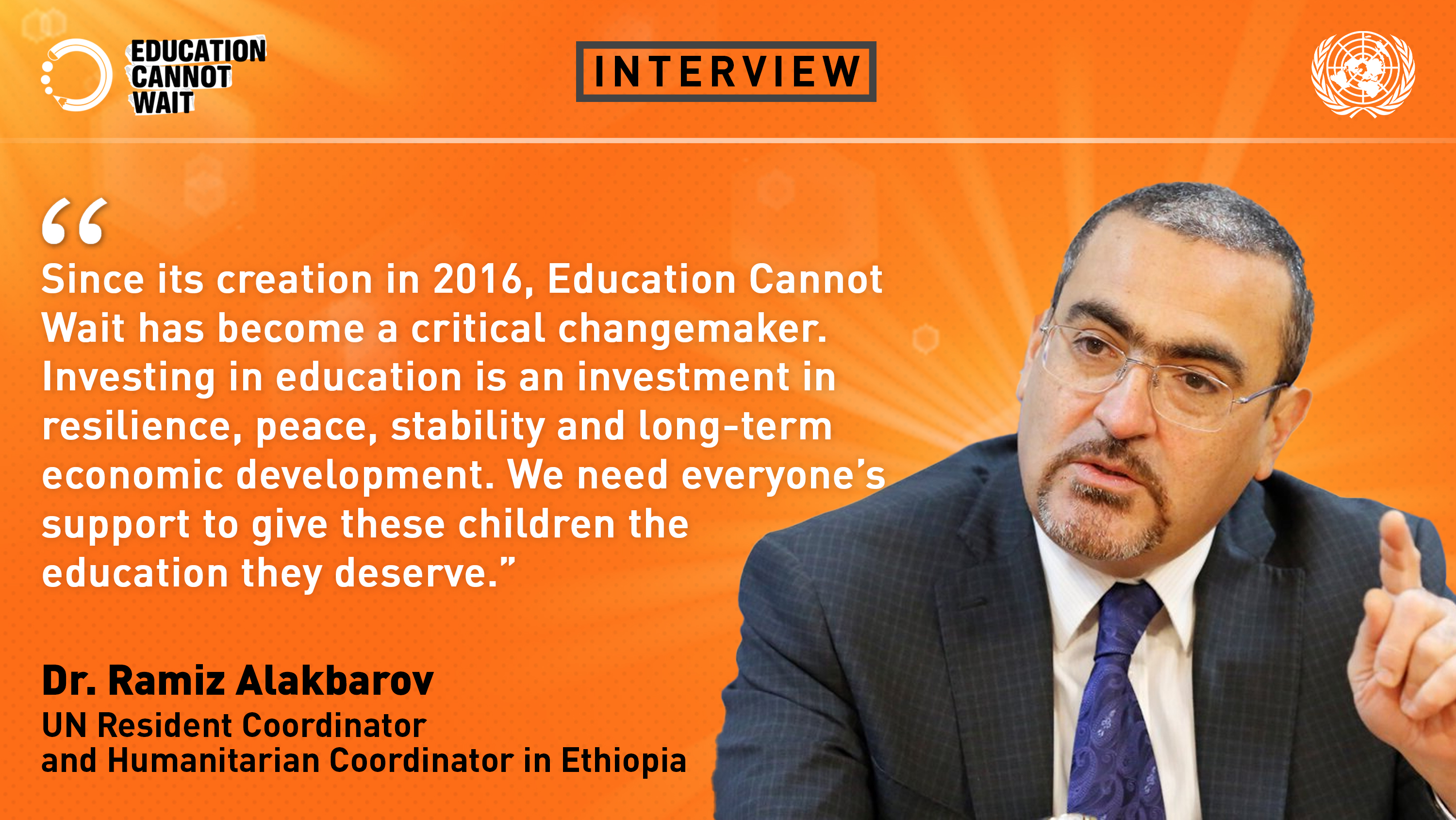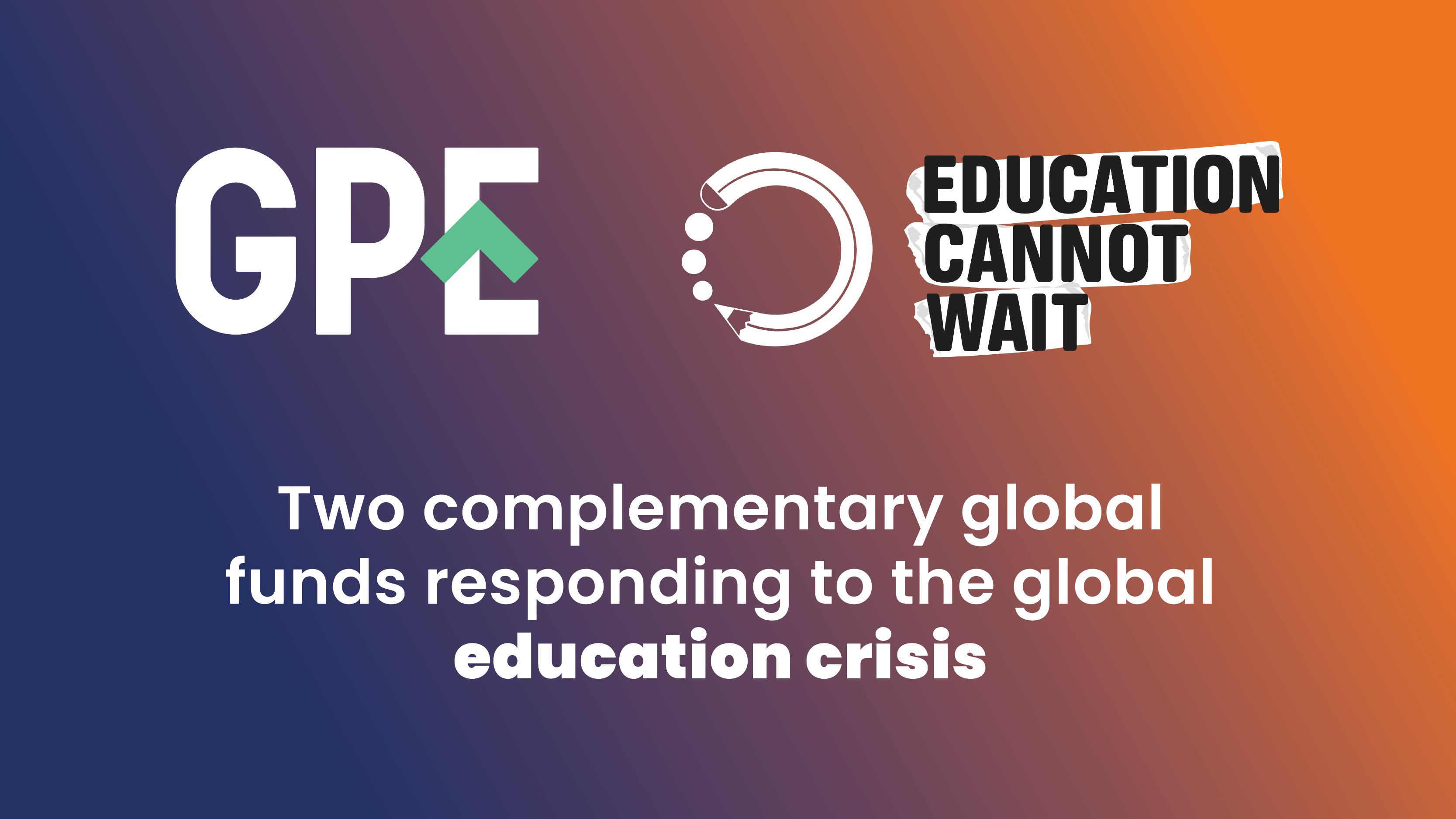Education Cannot Wait Interview With Rt. Hon. Gordon Brown
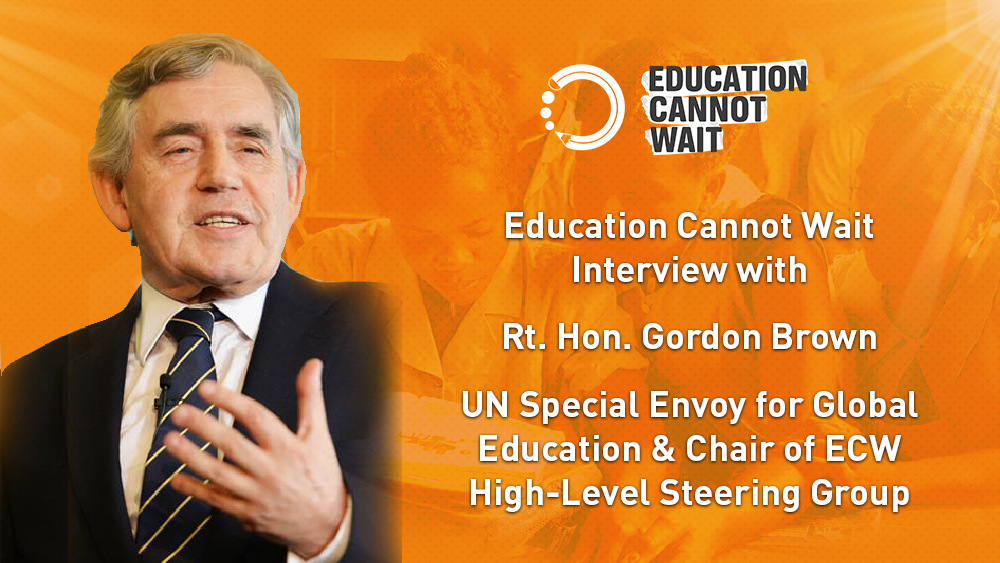
Interview with Rt. Hon. Gordon Brown, United Nations Special Envoy for Global Education and Chair of the Education Cannot Wait High-Level Steering Group
As the world marks the second International Day of Education on 24 January 2020, Education Cannot Wait’s Director, Yasmine Sherif, interviewed one of today’s most prominent and passionate advocates for the global movement to ensure education for all. In his role as UN Special Envoy for Global Education and as Chair of the ECW High-Level Steering Group, Rt. Hon. Gordon Brown has successfully galvanized financial and political support globally with the hope and opportunity of quality education for every child in this world.
1. You are the leading global advocate for education worldwide. What inspired you to take on the cause of education out of so many issues facing our world?
I’m just one of many who realized that – as the Education Commission concluded – education unlocks not only individual opportunities, but also unlocks gender equality, better health, better qualities of life and a better environment. The Education Commission’s report illustrates how education is the very foundation for unlocking all other Sustainable Development Goals. For example, I am struck by the fact that infant and maternal mortality can be as much as twice as high among uneducated women compared to those who are educated, and I continue to be shocked by several brutal facts:
- 260 million school-age children are not in school
- 400 million children are completely out of education for good at age 11 or 12
- 800 million children are leaving the education system without any qualifications worth their name
In fact, it’s even worse than that: In 2030, we could be as far away from meeting SDG4 as we currently are, unless we act decisively together, now. One reason why the situation is so grave is that today there are 75 million children and youth in need of urgent education support in crisis-affected countries, of whom 20 million are internally displaced children and 12 million are child refugees. Indeed, only a fraction – 1 to 3 per cent – of refugees go on to higher education, whereas, for example, in pre-conflict Syria it used to be 20%. That is why Education Cannot Wait (ECW) is so crucial to meeting SDG4. We need action now. It simply cannot wait if we are to meet the target by 2030.
2. As the UN Special Envoy for Global Education, what is your vision for some of the key multilateral actions, such the UN, EU and the World Bank to achieve SDG4 by 2030?
We need a renewed focus on education and we need resources, response and reform. We set up the Global Education Forum, working with UNESCO, to ensure that we have maximum coordination of our efforts between the UN, EU and the World Bank and we will soon outline plans for raising the profile of global education in countries across the world.
As humanitarian crises and refugee flows are multiplying at an unprecedented speed, it is critically important to fund ECW’s investments delivering quality education to children and youth impacted by armed conflicts, forced displacement and natural disasters. Furthermore, and in partnership with these actors, we have set up the International Finance Facility for Education (IFFEd). Through IFFEd, we are aiming for $10 billion in extra funds for educational investment. Currently, we are now around $2-2.5 billion. To achieve our goal, we have to secure the support of more countries.
3. What do you see as the biggest challenges in ensuring that every child and young person has continued access to a quality education and what are the priorities to meet those challenges?
Quality education is crucial. As I said, we need resources, speed in the response during crisis and long-term reform to succeed.
Children and youth affected by emergencies and crisis cannot be out of school or wait for a decent education for years simply because a crisis has erupted in their country. As a matter of fact, education is their only hope and opportunity to be able to sustain conflicts and disasters. By the same token, every crisis-affected country needs human capital to rebuild and recover.
We need to train and properly remunerate teachers. Teachers are so important – no one ever forgets their teachers and teachers are the key to improved school standards. We also need the best school leaders serving as head teachers. We need a more relevant curriculum. We need to use technology more effectively, especially in outlying areas – to ensure children are not denied the input and the resources they need for a good education. We need to use technology effectively not just for school education, but for higher educational opportunities that could be both on-line and tutor-led.
4. You are also the Chair of the High-Level Steering Group of the Education Cannot Wait Global Fund, which was created during the World Humanitarian Summit largely thanks to your leadership. Education Cannot Wait is a rather unique name. How did you come up with such name and why did you think this fund was necessary?
I saw the urgency and the need for speed in situations of crisis and forced displacement. Education in countries affected by conflicts and disasters was falling between two stools – humanitarian aid, which prioritized health, food and shelter, with hardly any resources allocated for education – AND development aid, which is more long-term and often is slow to react to a crisis. Millions of children and young people were left behind with no education, no hope and no means of bouncing back and plan for their future.
Education Cannot Wait was established at the World Humanitarian Summit to inspire political support and mobilize the resources that we lacked. It was also established to bring together both humanitarian and development actors to jointly provide the crucial flow of educational support for children and youth impacted by crises. And so far it has worked! It is a fast moving fund that is focused to bringing education to the most difficult humanitarian contexts. We now have investments in over 30 countries.
One example is the comprehensive Uganda Education Response Plan for Refugees to give support to South Sudanese and other refugees – where all organizations have come together and where we are providing support to the government in mainstreaming refugee education. This is important because the common impression people have of refugees is that they are only out of their country for a short time. But in fact, the average humanitarian crisis now lasts more than nine years, and families caught up in conflicts spend an average of 17 years as refugees. For far too many children, this mean being a refugee throughout their entire school age years. So, they need help with education now. It cannot wait until a conflict or crisis has ended and they can return home.
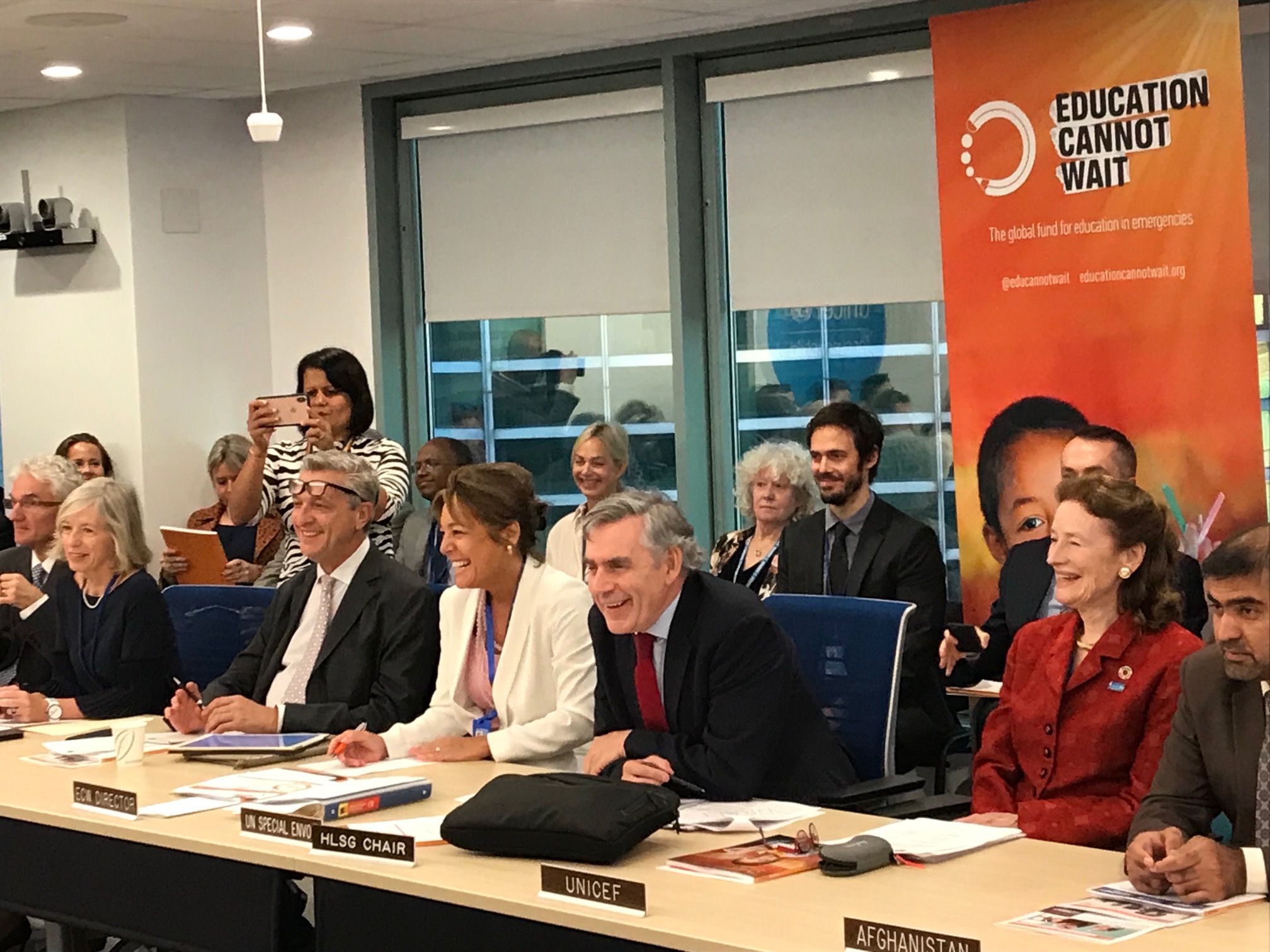
5. How do you see the Education Cannot Wait Global Fund progressing in advancing UN reform, the New Way of Working and making a real difference for children and youth in conflicts, disasters and forced displacement?
I think we are learning all the time. We now see that education in emergencies and protracted crises requires joint programming where governments, UN agencies, civil society organizations, and private sector organizations work cooperatively together to bridge the gap between humanitarian and development systems. Education Cannot Wait brings all these actors together through one joint programme whereby humanitarian and development activities are coordinated and complementary towards collective outcomes. This in turn accelerates delivery and strengthens the collective capacity to produce real learning outcomes.
Since Education Cannot Wait is situated in the UN, it is well placed to translate the New Way of Working, the Grand Bargain and Humanitarian-Development coherence into very tangible action in-country. It is encouraging to see how education in emergencies and protracted crises is now playing such an instrumental role in setting an example. In Uganda, for instance, the Education Response Plan for Refugees is now modeling response plans and joint programming in other sectors, such as health. Education Cannot Wait has developed a crisis-sensitive formula that is not only aligned with, but also has the potential of supporting the New Way of Working across the SDG Agenda.
6. What are the three most important value-adds of the Education Cannot Wait Global Fund?
Education Cannot Wait was born in an era when we couldn’t provide for Syrian refugees an education without new ideas and coordination. One of them was double-shift schools. With refugees dispersed across Lebanon, Turkey and Jordan, the idea was conceived to share existing schools, so that in Lebanon 300,000 or so Syrian refugee children are educated in their native Arabic in the afternoons in the same classrooms that Lebanese children are taught French and English in the mornings. We were creating the wheel in developing plans like the RACE plan in Lebanon with all of the donors and partners, and were determined to create a system that could provide rapid education delivery and medium term planning and financing in emergencies.
Education Cannot Wait works with governments, while supporting vulnerable populations, such as refugees, internally displaced, war-affected, marginalized groups, girls and children with disabilities. As a global fund, ECW was designed to reduce bureaucracy and strengthen accountability towards these children and youth. Hosted by UNICEF, the fund is able to operate with speed and quickly access those left furthest behind in crisis areas thanks to a business model and support mechanisms designed for crisis-contexts. A major added value is the way in which ECW serves as a catalyst for humanitarian-development coherence in the education sector. This is quite unique.
7. You also conceived of the International Financing Facility for Education (IFFEd). How did it come about and how can it become a game-changer? What makes it different and how can it be optimized in cooperation with partners?
There are 200 million children in low income countries and what the World Bank has done by enhancing IDA is make more resources available from the international community. In theory, IDA could raise educational aid from $1.6 billion to $3.5 billion over the next few years and we’ve advocated that education in low incomes countries should be 15 per cent of all IDA spent.
But there’s a gap that hurts the 700 million children in lower middle-income countries where we have the most out-of-school children and the largest number of refugees. Here, the World Bank provides not 10 or 15 per cent of its resources for education but around 4 per cent, and sadly, the recapitalization of the World Bank – while successful – has also created a ceiling limiting the future availability of new resources.
Therefore, with World Bank support, we are creating a new fund for education that will focus resources and financing help for the 700 million children in lower middle-income countries, on similar terms that the World Bank offers, but with far more resources.
We aim to raise $10 billion, which would require $2 billion in guarantees and perhaps $2 billion in grants to create four to five times as many resources for investment in education. This will be of special help to countries where there are large numbers of forcibly displaced persons, including refugees.
8. How do you see the complementarity between the International Financing Facility for Education, the Education Cannot Wait Global Fund and the Global Partnership for Education?
Each of us have complementary jobs to do in a synchronized way. The chair of GPE, Julia Gillard, was a member of our Education Commission, which recommended the new facility. GPE does important work – thankfully with increased resources after their recent replenishment – and this work, mainly in low-income countries, is complemented by what is offered through IFFEd.
Education Cannot Wait provides a different business model. It is grounded in the UN system’s ability to move with speed in crises, while also applying a crisis-sensitive development response, which is so important to reach SDG4 for those left furthest behind. It is no longer a start-up fund, but is growing rapidly in outreach and influence. So funding needs to continue to increase to complement other funds, such as GPE and IffEd.
9. In your view, where will we be in 2030? Will we still be in a global education crisis or will we have resolved it?
One of the tragedies is that while the numbers of qualified young people have risen, still less than 25 per cent will have any recognizable qualifications by 2030. More than 27 per cent will have left school by the age of 11 or 12 years, or have ever been at school. This educational divide between the ‘education-poor’ and the ‘education-rich’ will only grow and what worries me most in this regard is Africa. I’ve already shared earlier on in this interview the shocking figures for 2030, but worse still, Africa will see a rise in ‘out-of-school’ and in ‘unqualified school-leavers’, unless we act now. To inspire such action, we must share the data, show how challenging the situation is and propose the solutions that are so desperately need now and which all funds can help provide.
10. Any final thoughts as we enter the Decade for Action? How do we best translate the vision of SDG4 into action in the coming 10 years?
We must become the first generation in history where every child goes to school.
Instead of just developing some of the talents of some of the young people in some of the countries, we must develop all the talents of all young people in all countries. I am very conscious that universal education cannot be achieved unless we include the 75 million crises-affected children and youth whose education cannot wait. Their needs must be met if we are to meet SDG4 and achieve the noble objective that no one is left behind.
I am a great believer in the power of young people. We have seen this in the global march against child labor, by girls getting together to prevent child marriages, and through the work of global youth ambassadors in UNICEF, UNHCR and Their World who are an effective pressure group for change.
We must enlist students and parents and we must put pressure on both national governments and international institutions to achieve change. Politicians say that adjudicating is their top priority, but the current state of financing for education does not yet recognize this; some countries spend only 2 per cent of their national income on education.
We must have a coalition of education advocates that ensures that governments and international institutions take action when they say education is a priority. This must start by acknowledging how far behind we have been in securing education for crisis-affected children, including refugee and displaced children. Their needs and aspirations must be at the forefront of our thoughts.
We know that hope dies when a food convoy does not get through to refugees or a boat carrying them is lost at sea – but hope also dies when education is denied to children who desperately want and need it, and who cannot prepare for, nor plan for, their future. We must restore that sense of hope in the future for every child and young person living in abject poverty, on the margins of their societies or in countries of war, as refugees or affected by sudden disasters. We cannot leave any child or young person behind.
About Education Cannot Wait
Education Cannot Wait (ECW) is the first global, multi-lateral fund dedicated to education in emergencies. It was launched by international humanitarian and development aid actors, along with public and private donors, to address the urgent education needs of 75 million children and youth in conflict and crisis settings.
Follow us on Twitter: @EduCannotWait
Additional information is available at www.educationcannotwait.org
For press inquiries:
Kent Page, kpage@unicef.org, +1-917-302-1735
Anouk Desgroseilliers, adesgroseilliers@un-ecw-org, +1-917-640-6820
For any other inquiries:
info@un-ecw.org

